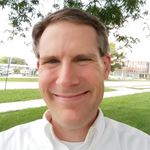
My research uses modeling to understand complex coupled human and natural systems, and can be generally described as computational social science. I am especially interested in modeling water management systems, in both archaeological and contemporary contexts. I have previously developed a framework for modeling general archaeological complex systems, and applied this to the specific case of the Hohokam in southern Arizona. I am currently engaged in research in data mining to understand contemporary water management strategies in the U.S. southwest and in several locations in Alaska. I am also a developer for the Repast HPC toolkit, an agent-based modeling toolkit specifically for high-performance computing platforms, and maintain an interest in the philosophy of science underlying our use of models as a means to approach complex systems. I am currently serving as Communications Officer for the Computational Social Science Society of the Americas.
Simulating Water, Individuals, and Management (SWIM)
John Murphy | Published Friday, July 05, 2019SWIM is a simulation of water management, designed to study interactions among water managers and customers in Phoenix and Tucson, Arizona. The simulation can be used to study manager interaction in Phoenix, manager and customer messaging and water conservation in Tucson, and when coupled to the Water Balance Model (U New Hampshire), impacts of management and consumer choices on regional hydrology.
Publications:
Murphy, John T., Jonathan Ozik, Nicholson T. Collier, Mark Altaweel, Richard B. Lammers, Alexander A. Prusevich, Andrew Kliskey, and Lilian Alessa. “Simulating Regional Hydrology and Water Management: An Integrated Agent-Based Approach.” Winter Simulation Conference, Huntington Beach, CA, 2015.
Hohokam Water Management Simulation (HWM)
John Murphy | Published Wednesday, August 31, 2011 | Last modified Saturday, April 27, 2013Simulation of irrigation system management using archaeological data from southern Arizona
Under development.